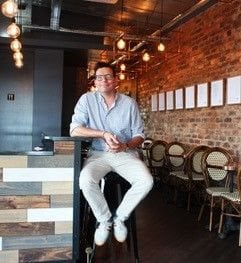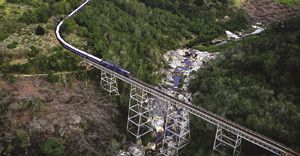
What will the restaurant industry look like post-Covid?

The catering industry was one of the hardest hit. One of South Africa’s leading corporate caterers Guy Bower of The Bowery says “The corporate catering industry has been especially hard hit. Overnight it went from a lucrative sector to total shutdown, and has pretty much stayed that way. Only those business owners who were able to pivot to another product offering have survived.” Bower himself has re-engineered his business to focus on providing stylish, well-made food packs to up-market clientele, but many have not been able to change so quickly, and the sector is in crisis.
When it comes to restaurants, a strange thing (well one of many strange things) happened during the various lockdowns around the world. We got used to not going to restaurants. We learned that eating out is expensive and possibly not as essential as we had thought. Thus it is safe to say that, to some extent, the habit of eating in restaurants has been somewhat broken. And once a pattern of consumption has been altered, it often does not return to the way it was. We have grown accustomed to cooking at home more, eating take-out, to having meals delivered and to consuming partly prepared meals. That sector of the economy has flourished. So if/when things return to normal-ish, it is very likely that we will see an over-all slump in demand for sit-down restaurants.
As this pie (yes, I know) gets smaller, who will benefit and who will lose out?
Mid-level restaurants seem to have been hardest hit. Fast food outlets tend to be owned by huge corporations, while the mid-level sit-down enterprises are generally family-owned. This has meant that mid-level establishments do not have the resources that fast food chains can deploy to see them through the Covid slump. This has meant that many have closed or will provide a reduced offering.
Furthermore, fast food outlets did not close for the same period of time. This has meant that our consumption patterns there were not AS disrupted as they were when it comes to sit-down offering. Meaning that they are likely to rebound quicker.
Health concerns are also likely to play a role in determining who survives this crisis, and how. By their very nature, the QSR (quick service restaurant) exposes consumers to less risk of Covid infection that their sit-down rivals. Bower says “Given that this pandemic is likely to have a very long tail indeed and be around for quite some time, it is highly likely that consumers will be more likely to risk a brief visit to a QSR rather than a lengthy one at a mid-level sit down establishment.”
Lastly, there is cost.
While they will always have healthy appetites, consumer’s finances are likely to be somewhat less healthy, which will make them even more cost-sensitive that they were in the pre-Covid economy. This can only be to the advantage of QSR and fast food outlets, resulting in a shift of spend towards this offering and away from more expensive offerings.
How exactly the non-QSR sector will adapt is intriguing. A clever friend of mine named Guy Park (his observation was so insightful that I feel I should give him credit for it) recently mentioned that we could well see a shift to sit-down restaurants operating like many in Asia do. In this environment, it is common to have several smaller restaurants sharing a kitchen and back-end. But the most interesting observation here was that these restaurants often share actual sit-down space too, with one establishment using the space during the day and another at night, which signage, staff and décor changing when a totally different restaurant utilizes the space for breakfast, lunch or dinner to save on expensive over-heads. He called it the “We Work” of restaurants. Which I thought was very clever.
So while the restaurant sector will be changed significantly by the Covid-crisis, it is safe to say that it will survive. In some ways it will be largely unchanged, and in other ways it may change entirely. Just like our society as a whole.
- Havas Media network launches global e-commerce offering in Africa03 Dec 13:58
- Havas Africa welcomes Provit Chemmani, heralding a new era of pan-African innovation29 Nov 10:08
- LG’s 2024 soundbars deliver complete at-home entertainment with rich audio15 Jan 12:26
- Havas Red expands to South Africa adding PR, social and content capability to the region11 Sep 12:06
- Havas Media ranks 5th as media agency in South Africa, Recma First Edition 2023 results show09 May 14:49















